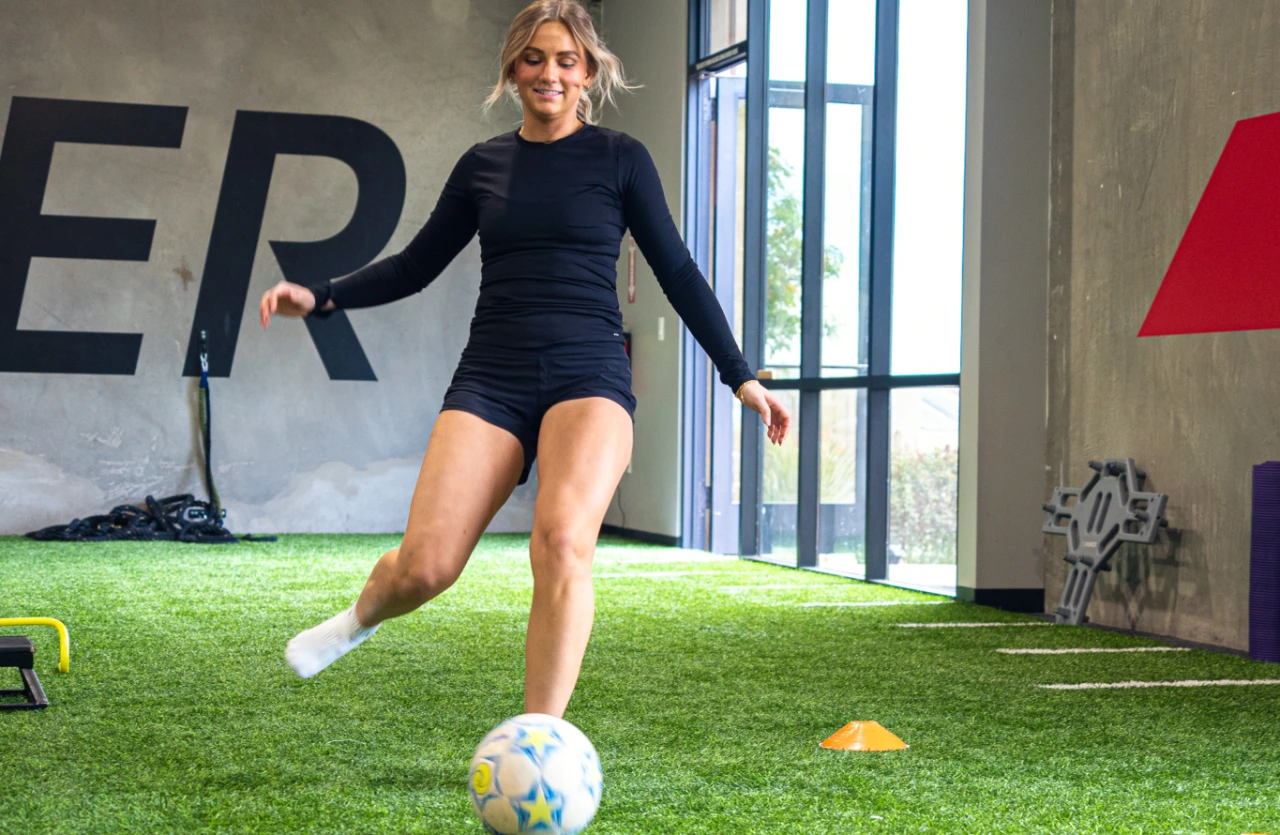By: Phillip Montoure, PT, DPT, CSCS
The uniqueness of soccer comes from the combination of needing the ability for long duration endurance and quick, high effort sprints while responding to how the game unfolds. Some sports are primarily sprinting or primarily sustained running, but soccer is both!
There are times of low-intensity, sustained running, while you are watching the ball. Once you see it, every player responds to it. So, that sustained running turns quickly into a sprint to either get the ball or beat a defender.
Along with this, you are changing direction constantly. So, not only do you accelerate in a forward motion, but you also have to be able to decelerate to a cut and then accelerate again.
If you have possession of the ball, you have to be doing all of this while maintaining possession. You have to juggle running with deciding to keep or pass the ball.
This game is also long- consisting of two 45-minute halves. Acceleration, deceleration, change of direction, and ball possession has to be sustained for this entire time.
Set yourself apart by learning functional exercises in “Functional Exercises For The Soccer Athlete” on the Spooner Blog.
Risk of Injury
Preparing for the season is key. Injuries could occur if you are not prepared for the demands of soccer.
If the body is not used to producing force quickly- being able to turn a jog into a sprint and then back to a jog- there is potential for injury. Strains are very common with this- whether it’s a muscle or a tendon strain.
A common strain in soccer is a hamstring strain. Most hamstring strains come at top-end speed because you are producing long strides. Your full sprint requires you to reach out your leg far in front of you. The elongation here extends your knee and puts the hamstring into a lot of tension. Your body needs to be trained progressively to be ready for high contraction and elongation demands.
Eccentric exercises are one approach to getting your body ready for the field. This helps load your hamstrings and calves in an elongated state for top speed as well as preparing you to decelerate from a sprint.
A lot of this comes down to strength training. You can utilize the weight room to improve eccentric strength and control. You can also train your explosive power which translates to breaking into a sprint. Training rotational stability through your trunk through the hips on down to your ankle will strengthen actual soccer-based movements.
Eccentric training has several benefits, read about them in “4 Benefits of Eccentric Exercise“. You can also learn about ways to build up tendon strength in “How To Build Tendon Strength: Eccentric, Isometric, and Plyometric Training” from the Spooner Blog.
Go to a Physical Therapist to Prepare for this Season
Going into a new season, or even transitioning to post-season, can put stress on your body. Having a PT on your sports medicine team- along with your athletic trainer and strength coach- can help make this process smooth. We can all work together to ensure you return to your sport strong.
If you are returning from an injury, a physical therapist can make sure you are ready. Even when you are cleared to return to sport, that doesn’t necessarily mean you are done with PT. We can work together to see how your body is adjusting and how much volume you can take.
Physical therapists use their expertise to determine how efficiently and effectively you are moving. We can see what your knee or opposite limb is doing in space while you are accelerating, decelerating, and changing direction. Once we see your movement patterns, we can help you become more efficient on the field.
We also can give you progressions and regressions of exercises to help you perform your best. These can be optimized to help you achieve a higher level of athleticism.
Are you ready to elevate your game and prevent injuries on the soccer field? Schedule an appointment with our expert physical therapist today and get ahead of the competition!

